Toyota 4Runner TRD Pro: great for off-roading, but not much else
Let’s face it. The current Toyota 4Runner (TM) is long in the tooth. When the current model debuted in 2009, it appeared fresh and offered all the amenities buyers looking for a serious SUV were looking for. Now nearly eight years later, the design is a little dated, and the creature comforts inside are less comfortable, more creature.
In fact our friends at Autoblog called it a dinosaur roaming the land of crossovers. A new model is expected, but apparently not for a couple more years.

Against that backdrop, Toyota decided to give a little something back to 4Runner fans, of which there are still many. For the 2015 model, Toyota unveiled the 4Runner TRD Pro edition, a trim level meant for serious off-roading.
For 2017 model, the package remains the same as in years past. This included TRD specific Bilstein shocks with remote reservoirs, TRD-tuned front springs and a TRD front skid plate, and special badges (can’t forget that). The engine choice is a single one, Toyota’s tried and true 4.0-liter V-6, pumping out 270 hp and 278 lb-ft of torque. The transmission is a five-speed automatic, which seemed relatively archaic these days with Ford F-150’s sporting automatic transmissions with 10 gears.

Toyota dropped off 4Runner TRD Pro in 2017’s exclusive new color, cement, for us to test.
Stepping inside the TRD Pro edition, you would think you were in a 4Runner Limited rather than a special edition version. Although you will notice the switches and dials up top for features like Active TRAC system, Crawl Control, and Multi-Terrain Select, everything else is the same as in other models.
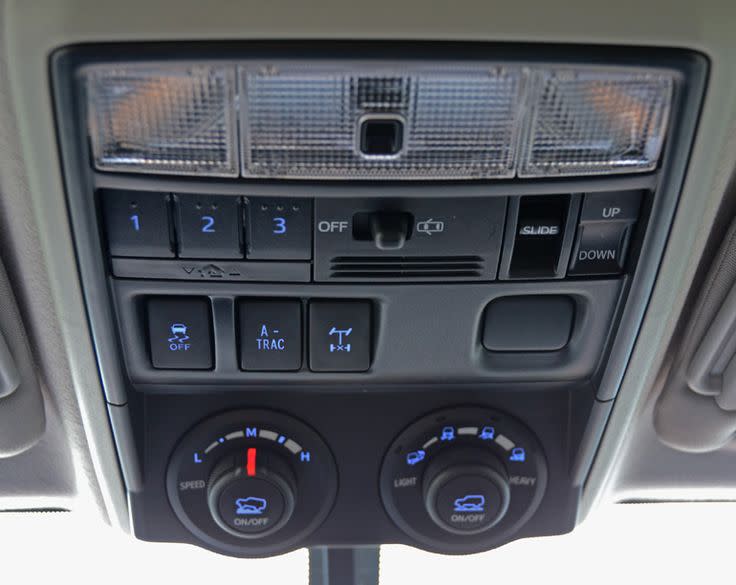
Unfortunately the same 6.1-inch touchscreen is carried over from the regular 4Runners, and it’s just as dated. Toyota says this is a “hi-res” touch screen, but it seems Toyota’s version is missing some pixels compared to other competitors.
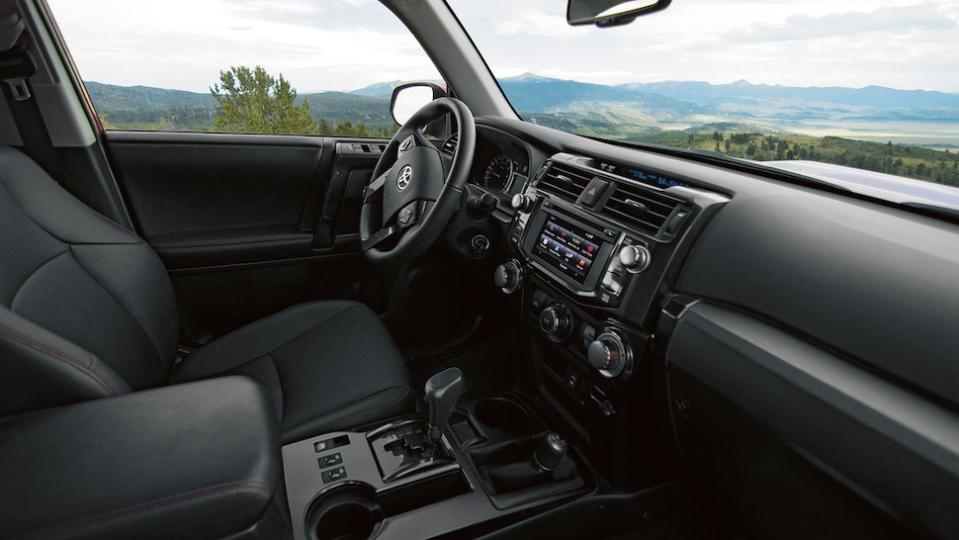
Driving the TRD Pro around town doesn’t feel that much different than a normal 4Runner, although you will notice it stands on 31.5-inch, all-terrain tires and a suspension giving it a 1-inch lift. The Nitto Terra Grappler tires are surprisingly quiet on pavement, giving an *almost* crossover-like ride. The suspension is smooth on pavement, but ride over a couple bumps and potholes, and you’ll feel some judders. I didn’t feel too much push or roll when cornering at higher speeds, again I would credit the suspension geometry and those Bilstein shocks.

That being said, driving the TRD Pro around felt somewhat laborious. The V6 engine unfortunately didn’t feel all that peppy, even when switching out of normal mode and into S-mode where I could select my own gears. The 4.0L V6 just couldn’t push the 4,750 lb at a spirited pace, something which other SUVs in this price range can do. (Our tester came in at $45,069; the TRD Pro starts at $42,400). In addition, safety and semi-autonomous driving features that I and my colleague Rick Newman have been raving about — forward collision alert, radar or adaptive cruise control, lane keep assist — are not offered on the TRD Pro.
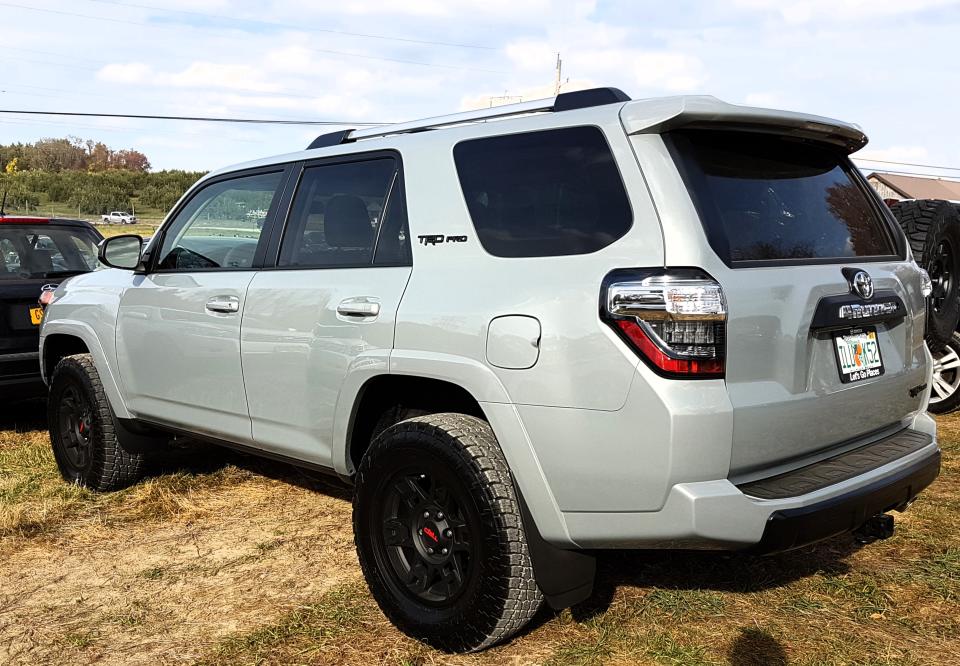
Where this vehicle does shine though is when it’s off the pavement. I was able to test the TRD Pro at an event near Monticello, N.Y. which featured an off-road course. After an instructor gave us a run through and tips for the course, I discovered the TRD Pro was more than capable rumbling over rocky terrain using crawl control and negotiating tough declines with its hill descent setting. The electronic locking rear differential also gave it traction in some tough spots along the course. It was a pretty comprehensive off-road course ranging from big rocks, mud, water, declines, and even inclines where one side of the vehicle was on a 45-degree angle (or so it seemed) and the other side on flat ground.
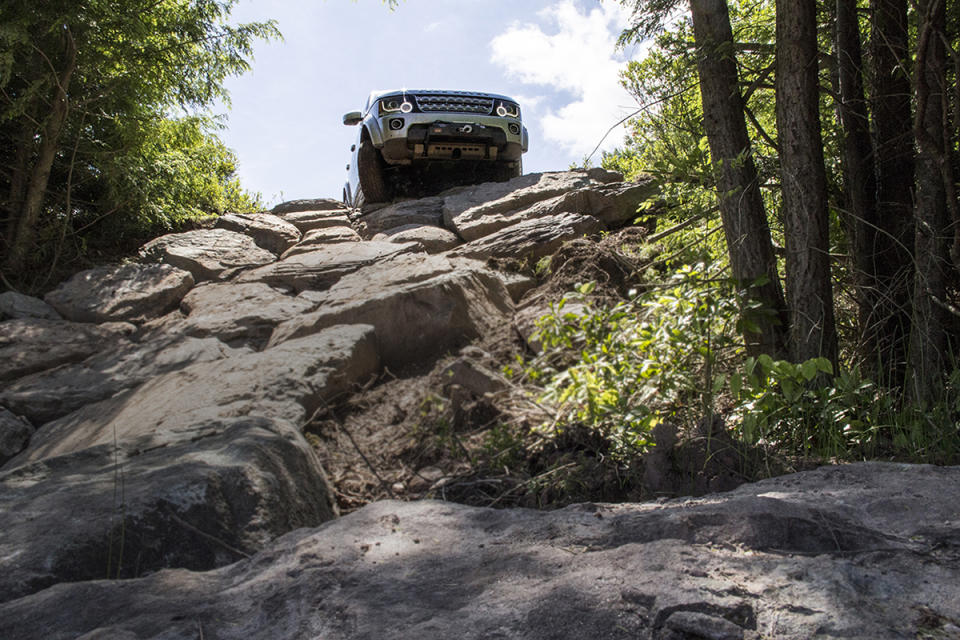
The 4Runner TRD Pro is a very capable vehicle indeed. But, if you’re never going to go off-road with it, is the TRD Pro worth it? I don’t think it is. There are plenty of SUVs and CUVs with more space, better visibility, and creature comforts for the 95% of Americans who will only keep their vehicle on pavement. And at a similar cost.
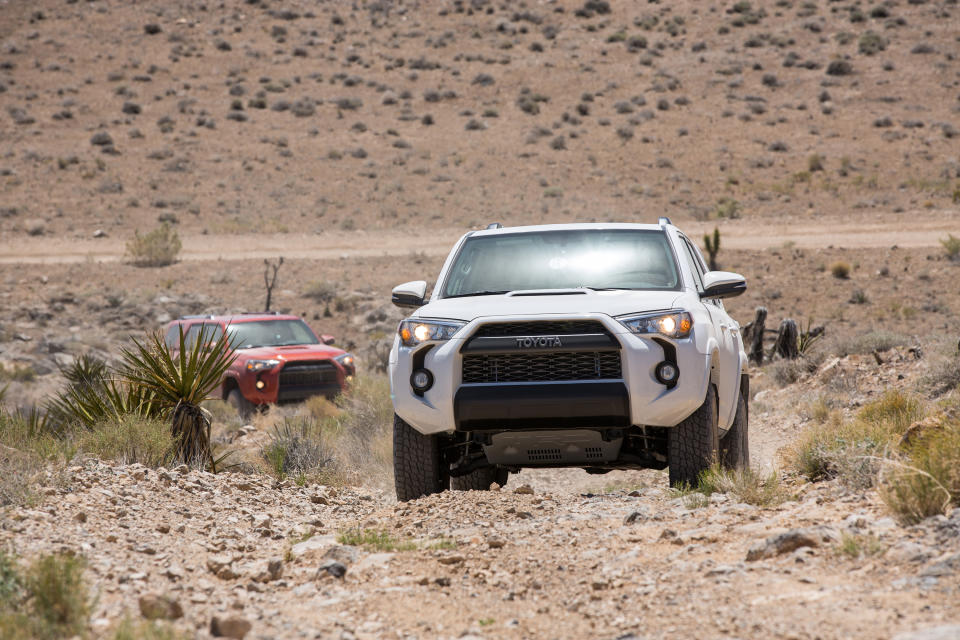
This is a specialist vehicle, and I can only recommend it for those users. But – if you like the way it looks, and you have the means, I’m sure Toyota will be more than willing to sell you a TRD Pro in Cement, Cavalry Blue, or whatever color they’re offering as an exclusive in 2018 (or better yet, wait a couple more years for the all-new 4Runner).
—
Pras Subramanian is a reporter for Yahoo Finance. You can follow him on Twitter here.
Related stories:
Chevrolet Colorado ZR2 – finally a mini Ford Raptor?
Why the Ford Raptor is the best recreational vehicle out there


